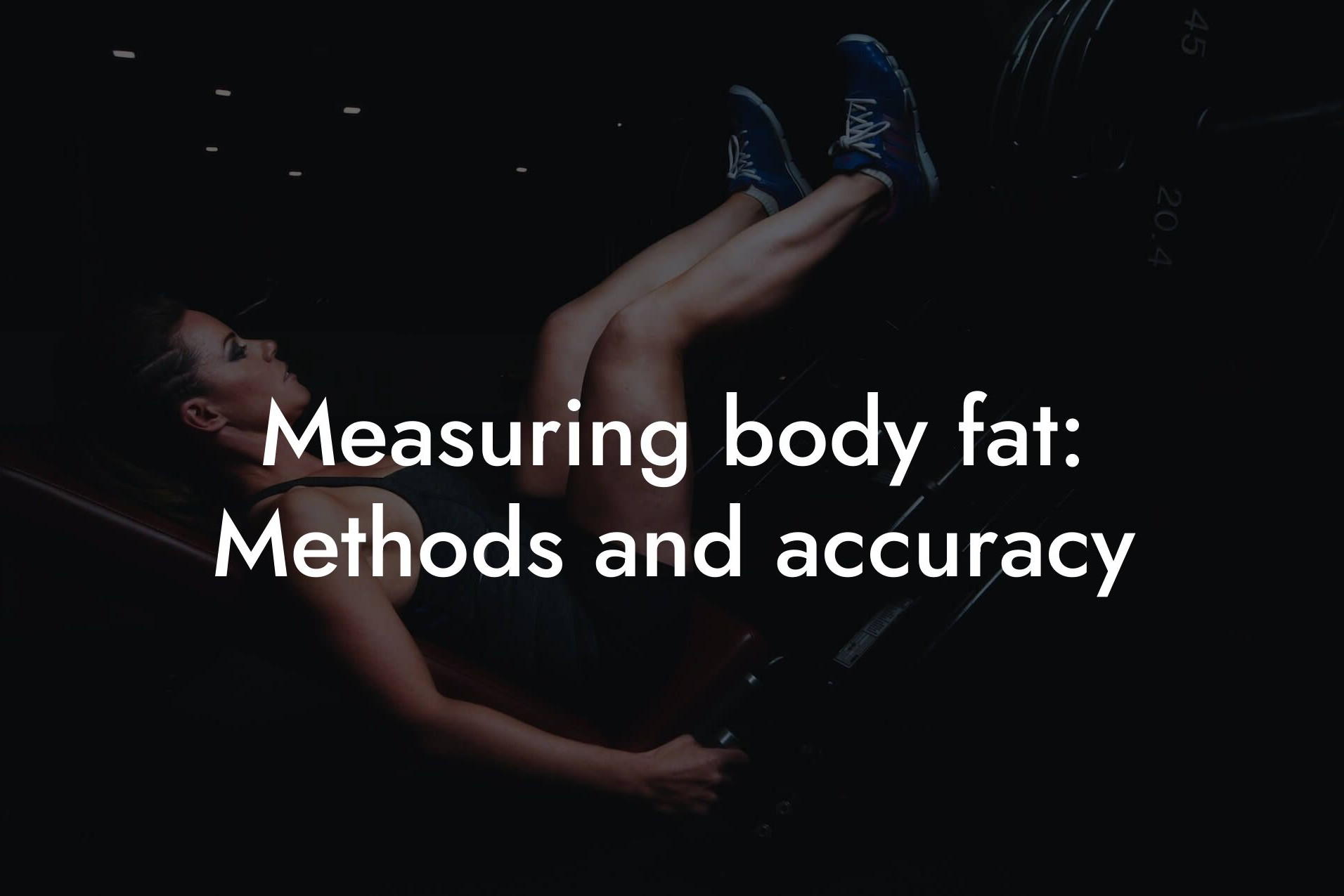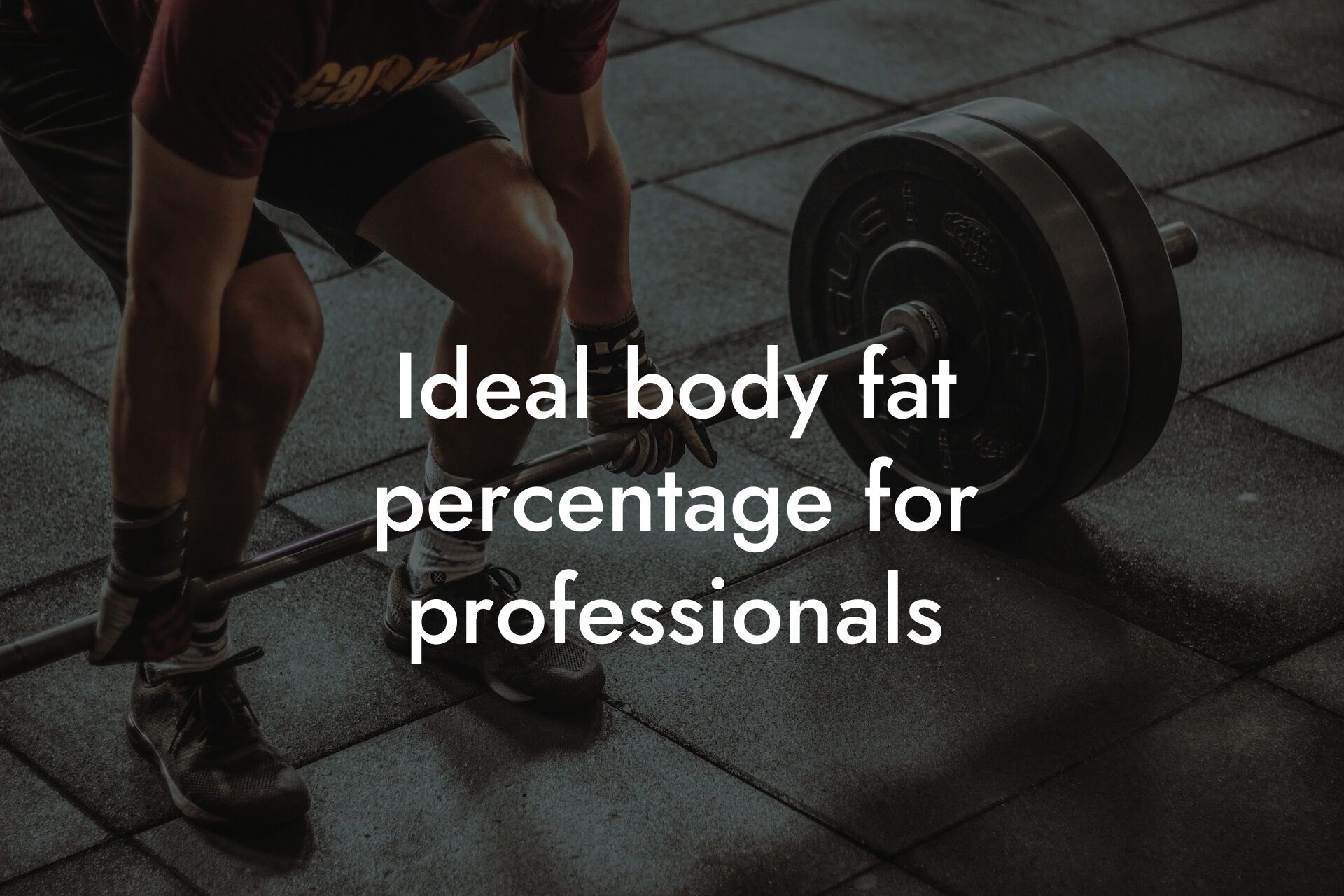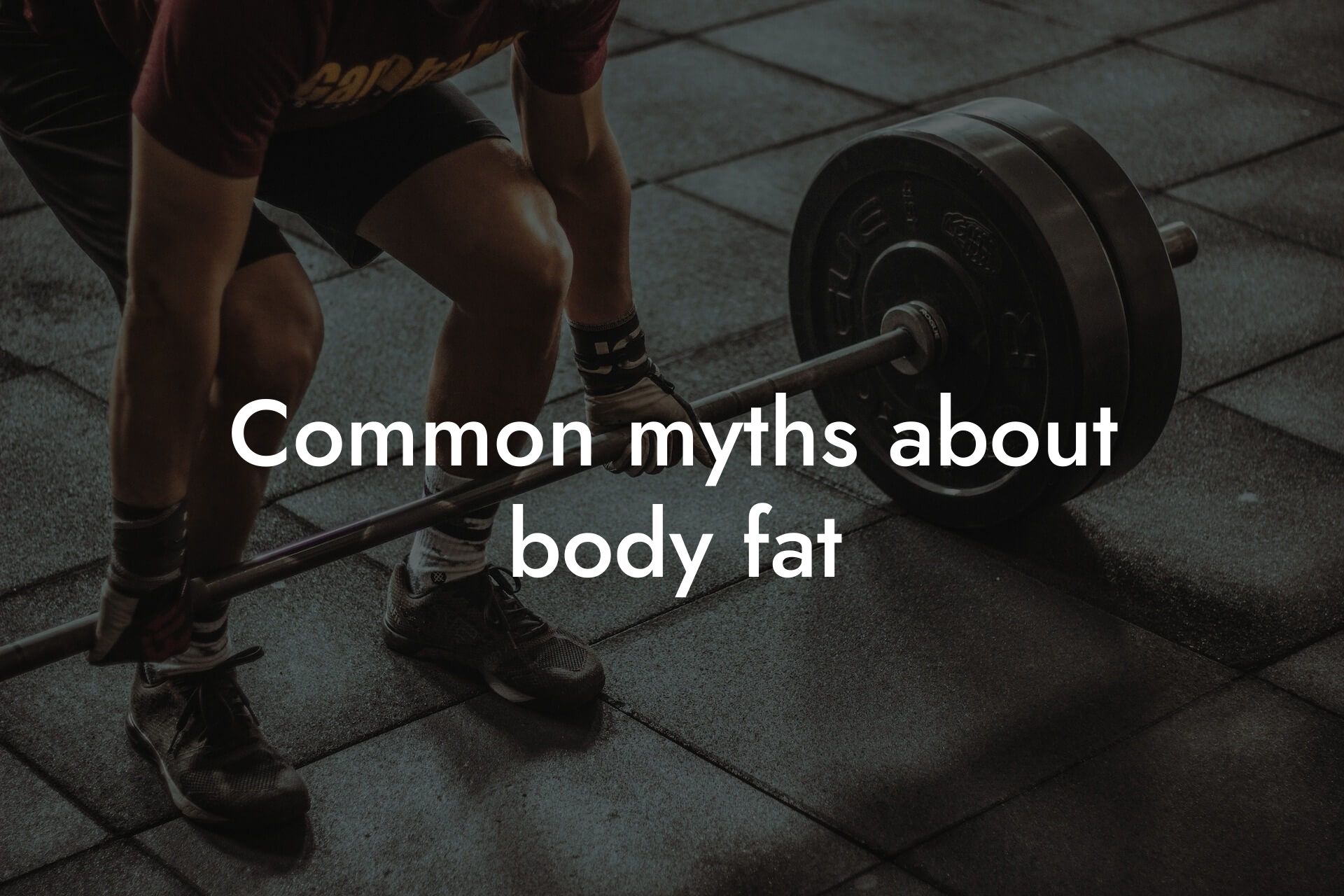As a high-earning professional, you understand the importance of maintaining a healthy and aesthetically pleasing physique. But have you ever wondered what truly matters more - body fat or muscle mass? In this article, we'll delve into the world of body composition, exploring the differences between body fat and muscle mass, and what you need to know to achieve your physical goals.
Table of Contents
What is Body Fat?
Body fat, also known as adipose tissue, is a type of connective tissue that stores energy in the form of fat. It's an essential component of our bodies, providing insulation, cushioning organs, and serving as an energy reserve. However, excess body fat can lead to a range of health problems, including obesity, diabetes, and cardiovascular disease.
What is Muscle Mass?
Muscle mass, on the other hand, refers to the amount of skeletal muscle tissue in your body. Skeletal muscle plays a crucial role in movement, posture, and balance, and is responsible for burning calories and maintaining metabolism. Having a sufficient amount of muscle mass is essential for overall health and physical function.
The Importance of Body Fat Percentage
Body fat percentage is a measure of the amount of body fat in relation to your total body weight. A healthy body fat percentage varies depending on age, sex, and fitness goals, but generally falls between 18-24% for men and 25-31% for women. Excess body fat can lead to a range of health problems, including insulin resistance, high blood pressure, and cardiovascular disease.
The Benefits of Muscle Mass
Muscle mass, on the other hand, is associated with a range of health benefits, including increased metabolism, improved bone density, and enhanced athletic performance. Having a sufficient amount of muscle mass can also reduce the risk of chronic diseases, such as osteoporosis, diabetes, and heart disease.
How to Measure Body Fat and Muscle Mass
There are several ways to measure body fat and muscle mass, including:
- DEXA (Dual-Energy X-ray Absorptiometry) scans, which provide a highly accurate measurement of body fat and muscle mass
- Hydrostatic weighing, which measures body density to estimate body fat percentage
- Skinfold measurements, which use calipers to measure the thickness of skin folds at specific points on the body
- Bioelectrical impedance analysis (BIA), which uses a small device to measure the resistance of an electrical current as it passes through the body
The Ideal Body Fat Percentage and Muscle Mass Ratio
The ideal body fat percentage and muscle mass ratio vary depending on age, sex, and fitness goals. However, a general guideline is to aim for a body fat percentage between 18-24% for men and 25-31% for women, and a muscle mass ratio of 1:1 to 1.5:1 (muscle mass to body weight).
How to Achieve Your Ideal Body Composition
Achieving your ideal body composition requires a combination of a healthy diet, regular exercise, and patience. Here are some tips to get you started:
- Focus on whole, nutrient-dense foods, including lean proteins, complex carbohydrates, and healthy fats
- Incorporate resistance training exercises to build muscle mass
- Aim for regular cardio exercise to burn excess body fat
- Get enough sleep and manage stress to support muscle recovery and growth
In conclusion, both body fat and muscle mass play important roles in our overall health and physical appearance. While body fat is essential for energy storage and insulation, excess body fat can lead to a range of health problems. Muscle mass, on the other hand, is associated with a range of health benefits, including increased metabolism and improved athletic performance. By understanding the importance of body fat percentage and muscle mass ratio, and incorporating healthy diet and exercise habits into your lifestyle, you can achieve your ideal body composition and take your physical health to the next level.
At Tano Performance Group, we understand the importance of body composition analysis in achieving your physical goals. Our state-of-the-art DEXA machine provides a highly accurate measurement of body fat and muscle mass, giving you the information you need to take control of your health and fitness. Contact us today to learn more about our body composition analysis services and take the first step towards achieving your ideal physique.
Frequently Asked Questions
What is the ideal body fat percentage for men and women?
For men, the ideal body fat percentage ranges from 8-19%, while for women, it ranges from 21-33%. However, these are general guidelines, and the ideal body fat percentage can vary depending on age, fitness goals, and overall health.
How do I measure my body fat percentage?
There are several ways to measure body fat percentage, including skinfold measurements, bioelectrical impedance analysis (BIA), dual-energy X-ray absorptiometry (DXA), and hydrostatic weighing. You can also use a body fat caliper to measure your skinfold thickness at various points on your body.
What is the difference between body fat and muscle mass?
Body fat refers to the amount of fat stored in your body, while muscle mass refers to the amount of lean tissue in your body. Having a higher percentage of muscle mass can help you burn more calories at rest, improve your overall health, and enhance your physical appearance.
Why is it important to maintain a healthy balance between body fat and muscle mass?
Maintaining a healthy balance between body fat and muscle mass is crucial for overall health and well-being. Excess body fat can increase your risk of chronic diseases, such as diabetes and heart disease, while having too little muscle mass can lead to decreased mobility and increased risk of injury.
How does body fat affect my overall health?
Excess body fat can increase your risk of chronic diseases, such as heart disease, type 2 diabetes, and certain types of cancer. It can also lead to joint pain, sleep apnea, and decreased mobility.
How does muscle mass affect my overall health?
Having a higher percentage of muscle mass can help you maintain strong bones, improve your insulin sensitivity, and reduce your risk of chronic diseases. It can also enhance your physical function and overall quality of life.
What are the benefits of having a high muscle mass?
The benefits of having a high muscle mass include increased metabolism, improved bone density, enhanced athletic performance, and reduced risk of chronic diseases. It can also improve your overall physical appearance and boost your confidence.
What are the risks of having low muscle mass?
The risks of having low muscle mass include decreased mobility, increased risk of injury, and reduced overall health. It can also lead to decreased bone density, impaired glucose tolerance, and increased risk of chronic diseases.
How can I increase my muscle mass?
You can increase your muscle mass through a combination of proper nutrition, consistent training, and sufficient rest. Focus on consuming a high-protein diet, engaging in resistance training exercises, and getting enough sleep to aid in muscle recovery.
How can I reduce my body fat percentage?
You can reduce your body fat percentage through a combination of a healthy diet, regular exercise, and stress management. Focus on consuming a balanced diet, engaging in cardiovascular exercise, and getting enough sleep to aid in weight loss.
What is the role of diet in maintaining a healthy balance between body fat and muscle mass?
Diet plays a crucial role in maintaining a healthy balance between body fat and muscle mass. Focus on consuming a balanced diet that is high in protein, moderate in carbohydrates, and low in unhealthy fats. Avoid processed foods and sugary drinks, and opt for whole, nutrient-dense foods instead.
What is the role of exercise in maintaining a healthy balance between body fat and muscle mass?
Exercise plays a crucial role in maintaining a healthy balance between body fat and muscle mass. Focus on engaging in a combination of cardiovascular exercise, resistance training, and high-intensity interval training (HIIT) to improve your overall fitness and enhance your physical appearance.
How often should I exercise to maintain a healthy balance between body fat and muscle mass?
Aim to exercise at least 3-4 times per week, with a combination of cardiovascular exercise, resistance training, and HIIT. Be sure to listen to your body and rest when needed, as overtraining can lead to decreased muscle mass and increased body fat.
What is the importance of getting enough sleep in maintaining a healthy balance between body fat and muscle mass?
Getting enough sleep is crucial in maintaining a healthy balance between body fat and muscle mass. Aim for 7-9 hours of sleep per night to aid in muscle recovery, improve your insulin sensitivity, and enhance your overall health.
How can I track my progress in maintaining a healthy balance between body fat and muscle mass?
You can track your progress by taking regular body fat measurements, tracking your weight, and monitoring your body composition. You can also take progress photos, track your workouts, and monitor your overall health and well-being.
What are some common mistakes people make when trying to maintain a healthy balance between body fat and muscle mass?
Common mistakes include not consuming enough protein, not getting enough sleep, and overtraining. Other mistakes include relying too heavily on cardio exercise, not incorporating strength training, and not tracking progress.
How can I stay motivated to maintain a healthy balance between body fat and muscle mass?
Stay motivated by setting realistic goals, tracking your progress, and celebrating your successes. Find a workout buddy or accountability partner, and focus on the benefits of having a healthy balance between body fat and muscle mass, such as improved overall health and enhanced physical appearance.
What are some common myths about body fat and muscle mass?
Common myths include the idea that muscle turns to fat when you stop exercising, that you need to be skinny to be healthy, and that you can spot reduce body fat. Other myths include the idea that you need to do hours of cardio to lose weight, and that muscle mass is only important for athletes.
How can I maintain a healthy balance between body fat and muscle mass as I age?
Maintaining a healthy balance between body fat and muscle mass as you age requires a combination of proper nutrition, consistent training, and stress management. Focus on consuming a high-protein diet, engaging in resistance training exercises, and getting enough sleep to aid in muscle recovery.
What are some tips for busy professionals who want to maintain a healthy balance between body fat and muscle mass?
Tips for busy professionals include finding a workout routine that fits your schedule, incorporating bodyweight exercises, and focusing on high-intensity interval training (HIIT). Other tips include meal prepping, prioritizing sleep, and finding a workout buddy or accountability partner.
How can I get started on my fitness journey to maintain a healthy balance between body fat and muscle mass?
Get started by setting realistic goals, consulting with a healthcare professional or certified trainer, and finding a workout routine that you enjoy. Focus on making sustainable lifestyle changes, and celebrate your successes along the way.
What are some resources available to help me maintain a healthy balance between body fat and muscle mass?
Resources available include consulting with a healthcare professional or certified trainer, online fitness programs, and mobile apps that track your progress. Other resources include fitness books, online forums, and social media communities dedicated to fitness and health.
How can I stay accountable and motivated on my fitness journey?
Stay accountable and motivated by finding a workout buddy or accountability partner, tracking your progress, and celebrating your successes. Share your goals with a friend or family member, and consider working with a personal trainer or fitness coach.
What are some common challenges people face when trying to maintain a healthy balance between body fat and muscle mass?
Common challenges include lack of motivation, inconsistent training, and poor nutrition. Other challenges include lack of sleep, increased stress, and unrealistic expectations.
How can I overcome these challenges and maintain a healthy balance between body fat and muscle mass?
Overcome these challenges by setting realistic goals, finding a workout routine that you enjoy, and focusing on sustainable lifestyle changes. Prioritize sleep, manage your stress levels, and celebrate your successes along the way.
Here are some related articles you might love...
- Measuring body fat: Methods and accuracy
- Ideal body fat percentage for professionals
- Common myths about body fat
- Body fat percentage by age and gender
- How body fat impacts overall health
- Body fat distribution: What it means for your health
- How to lower body fat percentage safely
- The relationship between body fat and productivity
- The role of diet in managing body fat
Zak Faulkner
Zak Faulkner is a leading authority in the realm of physical health and body composition analysis, with over 15 years of experience helping professionals optimise their fitness and well-being. As one the experts behind Tano Performance Group, Zak has dedicated his career to providing in-depth, science-backed insights that empower clients to elevate their physical performance and overall health.
With extensive knowledge of DEXA technology, Zak specializes in delivering comprehensive body assessments that offer precise data on body fat, muscle mass, bone density, and overall physique. His expertise enables individuals to make informed decisions and achieve their fitness goals with accuracy and confidence. Zak’s approach is rooted in a deep understanding of human physiology, combined with a passion for helping clients unlock their full potential through personalised strategies.
Over the years, Zak has earned a reputation for his commitment to excellence, precision, and client-focused service. His guidance is trusted by top professionals who demand the best when it comes to their health. Whether advising on fitness programs, nutritional strategies, or long-term wellness plans, Zak Faulkner’s insights are a valuable resource for anyone serious about taking their health and fitness to the next level.
At Tano Performance Group, Zak continues to lead our Content Team revolutionising how professionals approach their physical health, offering unparalleled expertise that drives real results.




